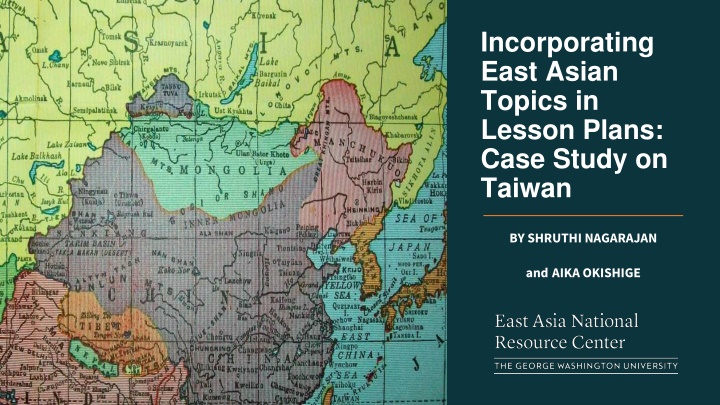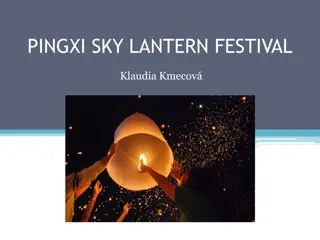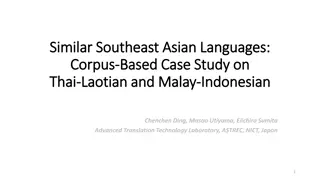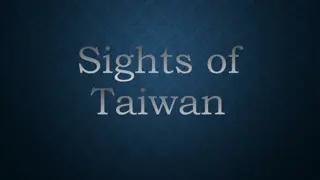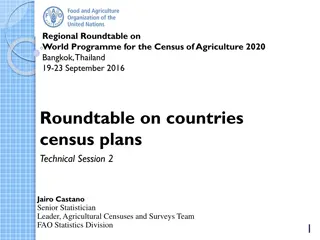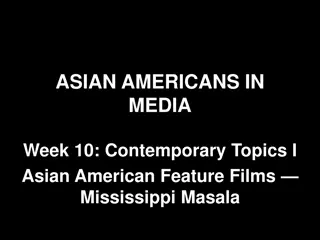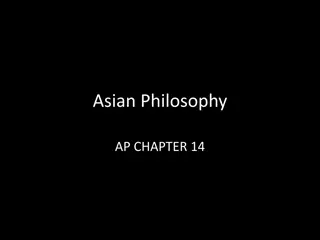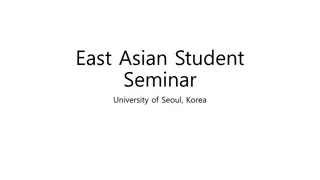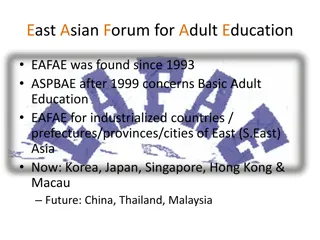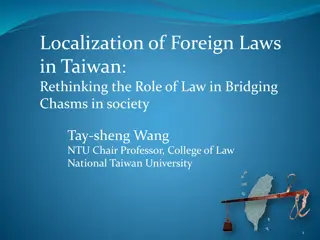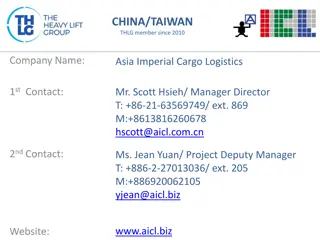Incorporating East Asian Topics: Case Study on Taiwan
This case study delves into incorporating East Asian topics, focusing on Taiwan. Explore culturally responsive teaching, characteristics, and resources to enhance educational inclusivity.
Download Presentation

Please find below an Image/Link to download the presentation.
The content on the website is provided AS IS for your information and personal use only. It may not be sold, licensed, or shared on other websites without obtaining consent from the author.If you encounter any issues during the download, it is possible that the publisher has removed the file from their server.
You are allowed to download the files provided on this website for personal or commercial use, subject to the condition that they are used lawfully. All files are the property of their respective owners.
The content on the website is provided AS IS for your information and personal use only. It may not be sold, licensed, or shared on other websites without obtaining consent from the author.
E N D
Presentation Transcript
Incorporating East Asian Topics in Lesson Plans: Case Study on Taiwan BY SHRUTHI NAGARAJAN and AIKA OKISHIGE
Agenda/Timeline 10:25 am 10:10 am 10:30 am 10:40 am Cultural Responsiveness Assess yourself! Lesson Plan Resources Assess your Cultural Responsiveness Resource Spotlight: Book-Culturally Responsive teaching and the Brain Culturally Responsive Teaching and its characteristics Culturally Responsive Teacher Culturally Responsive Lesson Plan Example Lesson Plan Sharing resources Q&As
Culturally Responsive Teaching A pedagogy that acknowledges, responds to, and celebrates fundamental cultures offers full, equitable access to education for students from all cultures.
Characteristics of Culturally Responsive Teaching Positive perspectives on parents and families Communication of high expectations Learning within the context of culture Student-centered instruction Culturally mediated instruction Reshaping the curriculum Teacher as facilitator Resource Spotlight 15 Culturally-Relevant Teaching Strategies and Examples Self-Audit your Culturally Competent Classroom (Pages 5-6)
Culturally Responsive Teacher Get to know your Students Make your classroom a judgement-free zone Adapt your teaching Include all cultures in your teaching Assess your Cultural competence
Assess your Cultural Responsiveness Are you aware of your own cultural bias and behavior? Are you ready to challenge any assumptions or stereotypes that you may hold? Can you acknowledge how culture impacts the daily life and activities of students? Can you understand how cultural norms influence communication? Do you make an effort to learn about other cultures? Can you effectively intervene when you see a student behaving in a discriminatory manner? Are your teaching styles adaptable to students of multiple different cultures? Do you allow for communication between you as your students' families?
Culturally Responsive teaching and the Brain Resource Spotlight! Children make relationships and learn best in a welcoming environment, hostile or unwelcoming environments obstruct best possible learning. Building positive relationships with students is essential to successful learning and development. Stories, art, movement, and music help to make learning sticky. When learning is a dynamic action, students attend to that learning. Methods such as call and response, perplexity, questioning, and other attention grabbing techniques wake students up and invite them into the learning. Successful learners are able to direct their attention effectively towards the learning. New learning must be connected to what we already know--we have to acknowledge what we know and then connect our new learning to that. "To empower dependent learners and help them become independent learners, the brain needs to be challenged and stretched beyond its comfort zone with cognitive routines and strategies."- Zaretta Hammond
Culturally Responsive Lesson Plan How does NRC create a lesson Plan? 1. List contemporary issues in East Asia relevant to the U.S. Current News! DMV school districts curriculum needs. Grades- Students background knowledge. Awareness of USA-East Asian countries relationship. Teacher requests. NOTE: Click the Logos to access the link to the websites!
Culturally Responsive Lesson Plan How does NRC create a lesson Plan? 2. Create a lesson plan - Utilizing general information Content of the Lesson Plan Warm Up Background knowledge Whole Group Instruction Use multiple resources to help diverse learners- videos, reading, activity, or podcast/audio. Work Time/Small Group Instruction Review/Reflection
Culturally Responsive Lesson Plan How does NRC create a lesson Plan? 3. Consult scholars and experts in the field Discuss what relevant elements would be valuable for students to learn Dive deeper into the issue and receive various perspectives on the topic This specifically helps us build a more culturally responsive Lesson Plan- by avoiding bias, political-social issues, etc. Ask if there are helpful and interesting resources (books, articles, and data, etc) Review if the lesson plan is teacher/student friendly
Culturally Responsive Lesson Plan How does NRC create a lesson Plan? 5. Consult with teachers Consulting teachers helps us make the lesson plan more teacher-friendly. Evaluate if the lesson allow students to learn what they cannot solely learn from textbooks. Helps us think from a teacher s perspective. Helps us understand teachers challenges on teaching East Asian subjects. 6. Publish on the NRC website!
Culturally Responsive Lesson Plan Example Example: Taiwan 228 incident Podcast with a Taiwan visiting scholar on Taiwan 228 incident Collect resources regarding Taiwan 228 incident and its influence Consult with GW faculties in East Asian studies and receive various perspectives and insights Design lessons focus with Taiwan 228
Resources East Asia National Resource Center-Podcasts, Skype-A-Scholar, Curriculum materials, Newsletter. Global Resources Centerat The George Washington University 35 Dumb Things Well-intended people say By Dr. Maura Cullen Examining Inclusion- 10 Core Concepts of for your Leadership-Worksheet East Asia and the World: Past and Present Lesson Plan Resources THE MET- East Asia Artifacts-Online Museum Global Taiwan Institute Center for International Strategic Studies has numerous initiatives under its Asia Program Brookings Institution's Center for East Asia Policy Studies
Resources Brookings Institution's Center for East Asia Policy Studies Project 2049 Institute Heritage Foundation's Asia program Carnegie Endowment for International Peace's Asia Program United States Institute of Peace's Asia Center American Enterprise Institute's Asia research Center for New American Security's Asia-Pacific Security research Institute for China-America Studies Sejong Society of Washington, D.C. Korea Economic Institute US-Japan Research Institute
Contact Information East Asia National Resource Center (https://nrc.elliott.gwu.edu/) T: (202) 994-5886 | E: gweanrc@gwu.edu Shruthi Shree Nagarajan Curriculum Designer snagara1@email.gwu.edu Aika Okishige Curriculum Designer aika3oki@email.gwu.edu
